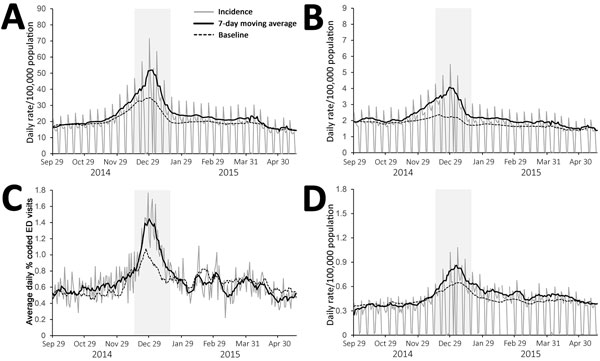Volume 23, Number 11—November 2017
Research
Retrospective Observational Study of Atypical Winter Respiratory Illness Season Using Real-Time Syndromic Surveillance, England, 2014–15
Figure 2

Figure 2. Daily incidence of severe respiratory indicators over winter 2014–15, England. A) General practitioner in hours (GPIH) lower respiratory tract infection consultations; B) GPIH severe asthma consultations; C) emergency department pneumonia visits; D) GPIH pneumonia consultations. Vertical gray shaded area indicates period of peak winter activity (week 51 of 2014 through week 3 of 2015). ED, emergency department.
Page created: October 16, 2017
Page updated: October 16, 2017
Page reviewed: October 16, 2017
The conclusions, findings, and opinions expressed by authors contributing to this journal do not necessarily reflect the official position of the U.S. Department of Health and Human Services, the Public Health Service, the Centers for Disease Control and Prevention, or the authors' affiliated institutions. Use of trade names is for identification only and does not imply endorsement by any of the groups named above.